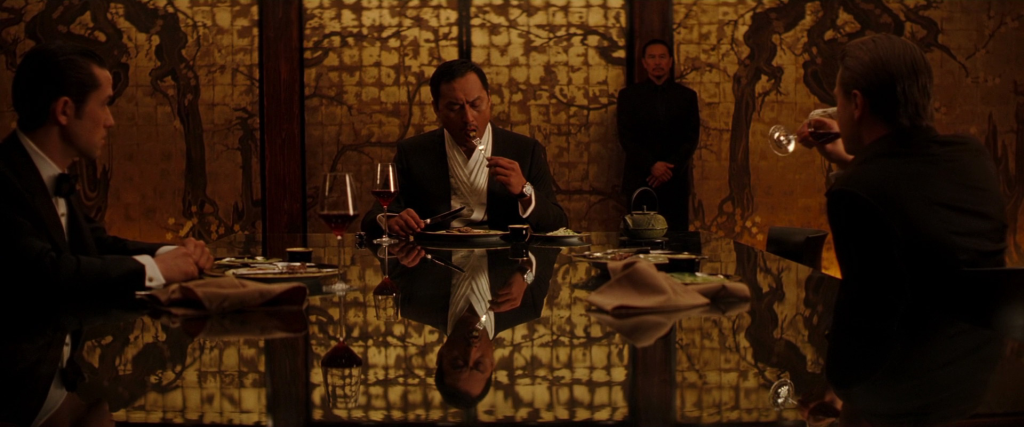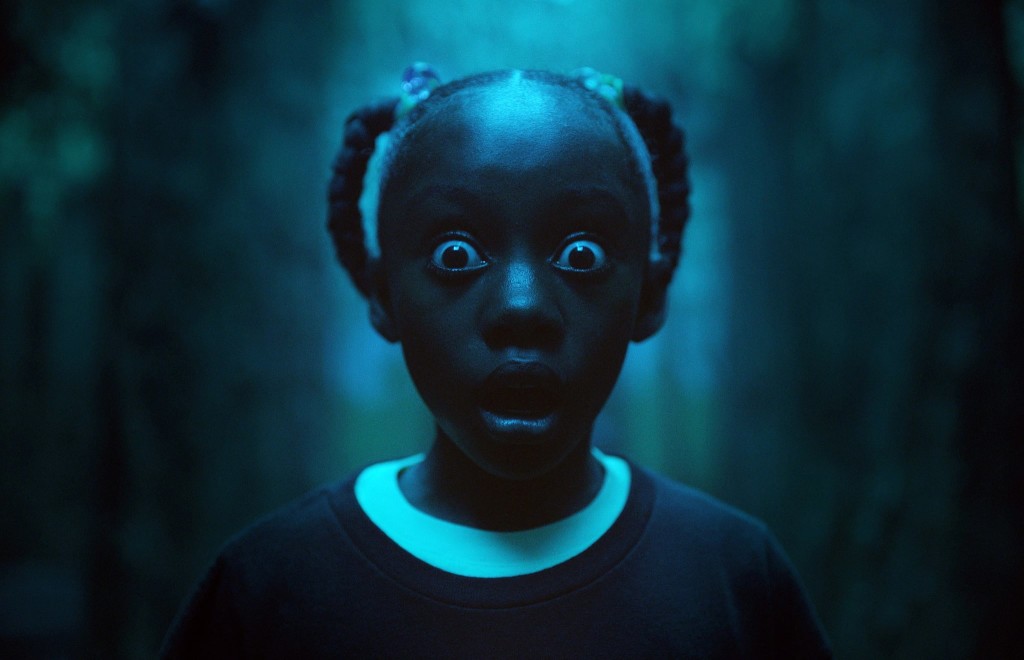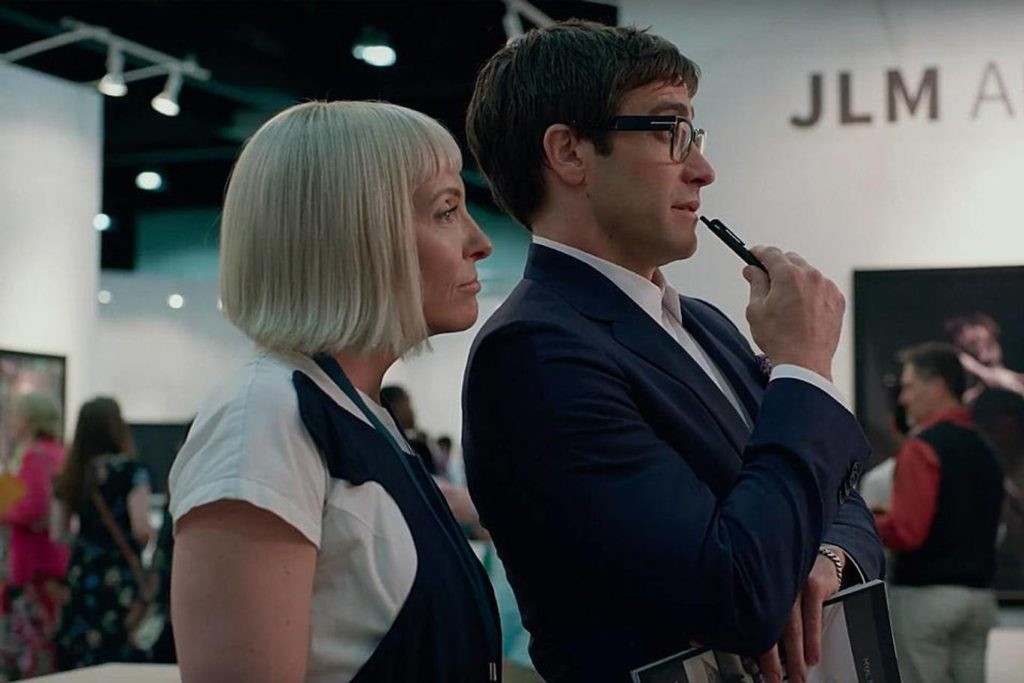I am FULLY AWARE that some of you are going to say to me, “ENOUGH, CARSON! ENOUGH WITH THE FIRST 10 PAGES! WE GET IT! THEY HAVE TO BE GOOD!”
Here’s the problem. They’re not good. The scripts I’m reading continue to have boring, bland, subpar, or outright bad first scenes. It occurs so often, I’m shocked when someone actually does write a good first scene. I’m mixing messages here. First 10 pages? First scene? What are we talking about, Carson? Let’s go with the first scene. It’s easier to build an article around that.
Now what I’m about to tell you is going to make you a hundred times better writer. Yes, I’m making that bold of a claim because that’s how powerful this piece of advice is. Are you ready? Here’s the tip: TELL A STORY WITH YOUR FIRST SCENE.
Do not open with an image. Do not open with a scene fragment. Do not start with a montage. Don’t set up your character. Don’t set up your plot. Whoa whoa whoa wait a minute, Carson. Don’t set up your character? Isn’t that one of the first things we’re told to do? Sure. Except setting up your character as opposed to telling a story is exactly why YOUR FIRST SCENE IS SO BAD. If you tell a good story with your first scene, your character will automatically be set up.
Now where were we?
Oh yeah.
The most powerful way to start your screenplay, and therefore the best chance you have of pulling a reader in, is to TELL A STORY. What does that mean? I’m glad you asked. Telling a story, in this context, is the act of writing a MINI-MOVIE to start your screenplay. That means you start with a first act (buildup and anticipation), move to the second act (character encounters conflict/obstacles), and kick’em in the gonads with your third act (resolution). Except because it’s the ending of your first scene and not an entire movie, your resolution will usually pose a question that makes people want to keep reading.
Confused?
Don’t worry. I’m going to give you five examples of writers who got this right. But before we get to that. A couple of things. I don’t care if you list examples of movies in the comments section that don’t do this. The reality is that movies which have a good story in their opening scene almost always turn out to be good movies as a whole. Also, note that many movies are forced to add opening credit scenes that weren’t in the original scripts. This is due to contractual union stuff that the filmmakers have no control over. It’s important to know this so that when you watch slow boring opening credits sequences in your favorite movies, you don’t misinterpret that to mean it’s okay to do so yourself. Let’s get started.
Inception – One of the most famous opening scenes of the past decade. A man arrives on a beach, walks into a castle, encounters another man who wonders if he’s here to kill him. Cut to a grimy bathroom with the beach man in a chair over a bath tub. Cut to a train where the man watching over the man in the bathroom is asleep and a young Asian man is watching over him. These three storylines intercut with one another as we realize some sort of mind heist is going on, which plays out to an elaborate conclusion. It can be argued that there are one too many mysteries being set up here. Regardless of that, Christopher Nolan is giving us a mini-movie for the first scene which is exactly what I’m asking you to do.
Us – Us has a much simpler first scene, but arguably a more effective one. I’m a huge advocate of simple storytelling so I love how Peele approaches this. A young girl is at a carnival. Her parents get distracted. She wanders off. She comes upon an empty Hall of Mirrors. She stumbles inside. She gets lost. She hears whistling. She follows it. Finally she’s confronted by something horrifying. Note that with this opening, all that’s happening is a girl wandering off. The scene plays out just as powerfully in its quiet moments (walking past a creepy homeless man) as it does its heightened ones (someone else is in the Hall of Mirrors with her). I bring this up to remind you that a story doesn’t need to have a million bells and whistles to work. As long as the story being told is compelling you’re good.
A Quiet Place – A Quiet Place’s first scene is its second best (after the birth scene). Like Us, we’re dealing with a very simplistic character goal. Travel into town and get supplies. However, we quickly realize there’s an added obstacle. They can’t make any noise. This heightens the tension of the scene considerably. They get what they need. The young son secretly pockets a noise-making toy. They walk back home. Just as they’re about to cross the bridge, the toy starts blaring, and the monster snatches him up.
The Matrix – A coincidence that one of the best sci-fi movies ever starts with a scene that tells a story? Two hackers, a man and a woman, are talking on a computer. The woman is warned that the cops have spotted her. The police show up to the building she’s in. This woman is wanted for something. But what? Here’s where things get fun. Three mysterious “agents” show up. They inform the police chief that the men they just sent up to get this woman are “already dead.” Huh? Cut to the police who try and kill the hacker woman, Trinity. She utilizes inhuman moves to kill them, then runs from the Agents, ending in a bizarre standoff where she charges towards a phone booth despite the fact that a truck is barreling towards and will crush it. They reach the booth at the same moment but she disappears before the truck can kill her! If this scene doesn’t inspire you to tell a story with your opening scene, I don’t know what will.
Promising Young Woman – Promising Young Woman is a screenplay that made the top of the Black List last year. I’m guessing its opening scene was a big reason why. We open on a bar with a bunch of stock trader types staring down a beautiful woman who’s hammered. Easy pickings. Except the nice guy of the group feels bad. Doesn’t want the girl to get hurt. Takes her back to his place. Hmm, maybe he’s not so nice after all. He’s got this hot wasted girl all alone in the privacy of his apartment. Gotta take advantage of that. Except, just as he makes his move, she sits up, loses the distant gaze, and is completely coherent. The girl is fine. She always was fine. She’s played him to prove a point – that like all men, he’s a predator.
I would be perfectly fine if, for the rest of your screenwriting days, you wrote your first scenes this way. “But Carson… each screenplay is different and you should adjust your approach accordingly.” No. You can make this work for EVERY SCREENPLAY and 99% of the time, it will be better than whatever other option you were considering. Telling a story both pulls us in AND proves you can write, the two things that matter most to a reader.
Just so you have some reference points, here are a few movies that don’t tell stories with their opening scenes. Velvet Buzzsaw. There’s no story here. It’s a man wandering through an art show. It’s clearly meant to establish character and subject matter. But in not adding a story to the proceedings, it comes off as neutered and uninteresting. As long as we’re on Netflix movies, Roma is another good example. Cuaron sets up this house via lots of boring imagery. But there’s no story tying it together. Is it a coincidence that Roma was considered to be the most boring movie of the year? You decide. Or A Wrinkle in Time. That movie starts with a girl dreaming about her dead father. Does it establish that the girl’s father is dead? Sure. Did it tell a story that kept us engaged while doing so? Nope. Fail.
I want to finish up by saying one more thing. ALWAYS FAVOR THE STORY OVER THE SETUP. You’re going to want to set things up. Set up characters. Set up your world. Set up some plot. Of course you’ll need to do this. But these things should all be secondary to creating an entertaining story with your scene. If you focus too much on the setting up part, the story part will fade into the background and we’ll lose interest. A good example of this is the opening to Solo: A Star Wars Story. We meet Han Solo driving back from somewhere. He’s stolen something important (gotta set that up!). Then we gotta set up this orphanage he lives in. Then we gotta set up Q’ira. Than we gotta set up that him and Q’ira are together. Then we gotta set up what their plan of escape is. There’s so much setup that even though they’re telling a story in the scene, it gets lost amongst all the setup! If you want to win over the reader, give us a great story in that opening scene first… and set up your script second. You’ll thank me when Sony buys your script and says they were hooked from the very first page.
Now go get’em!
I’ve decided to extend my Nicholl Script Consultation discount for one more week! That’s $100 off 4 pages of notes. If you send me your script by Sunday, I can get you your notes back by April 7, which gives you three full weeks before the deadline. E-mail me (carsonreeves1@gmail.com) with the subject line: “NICHOLL.” Also, ask about my new deluxe logline consolation package, where we e-mail back and forth until we get your logline just right. E-mail me with the subject line: “LOGLINE!”




